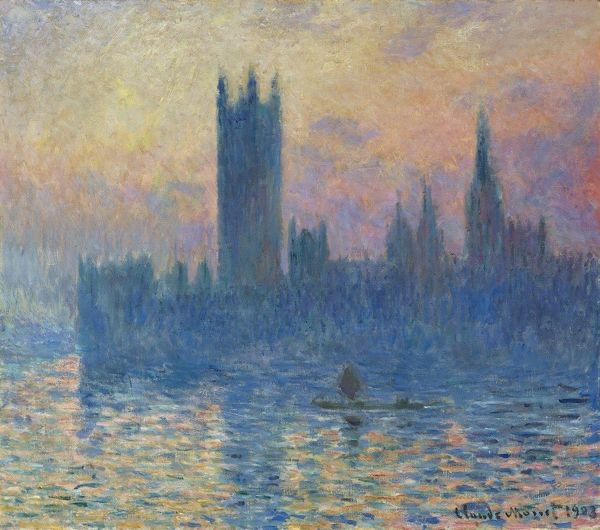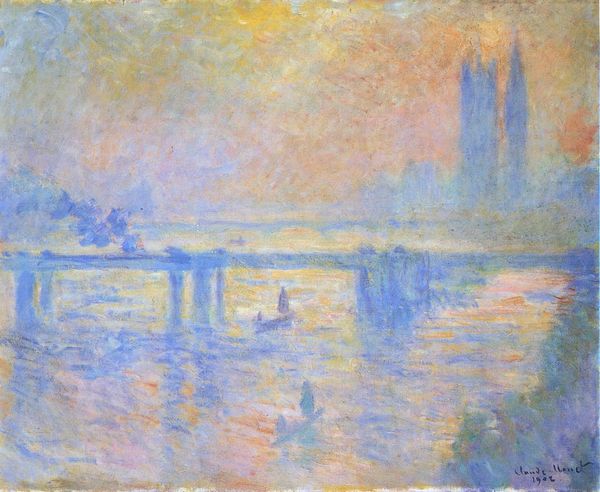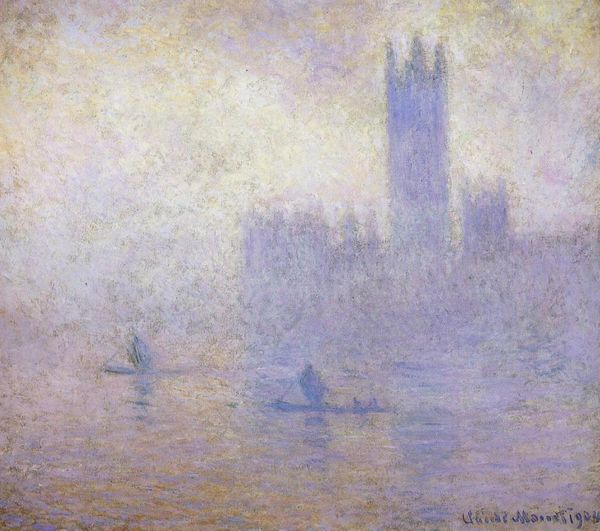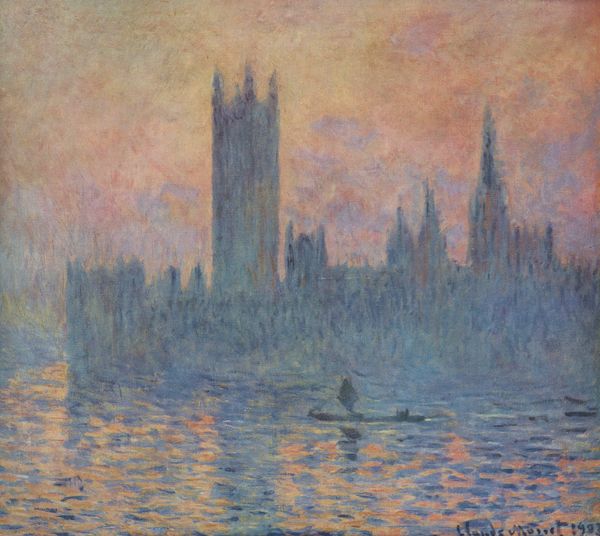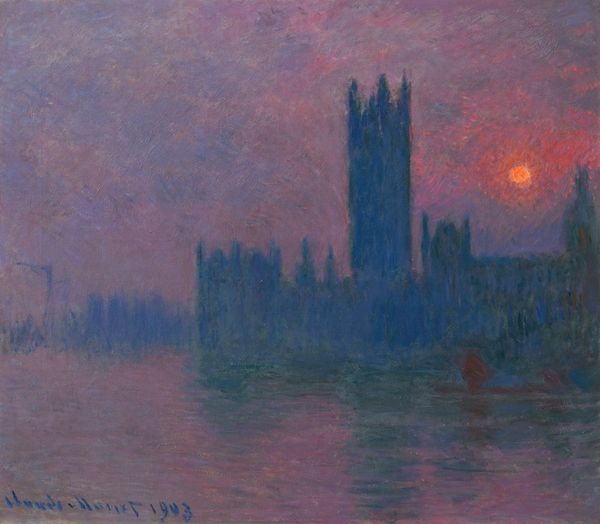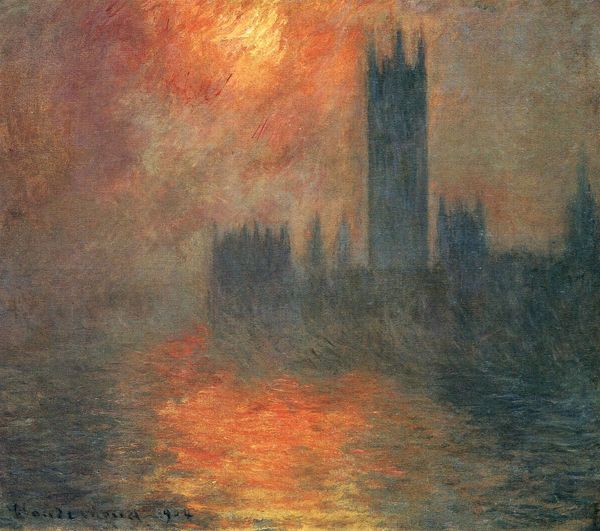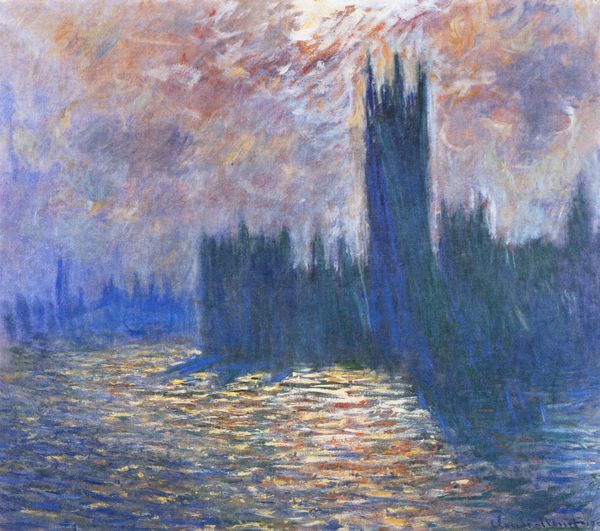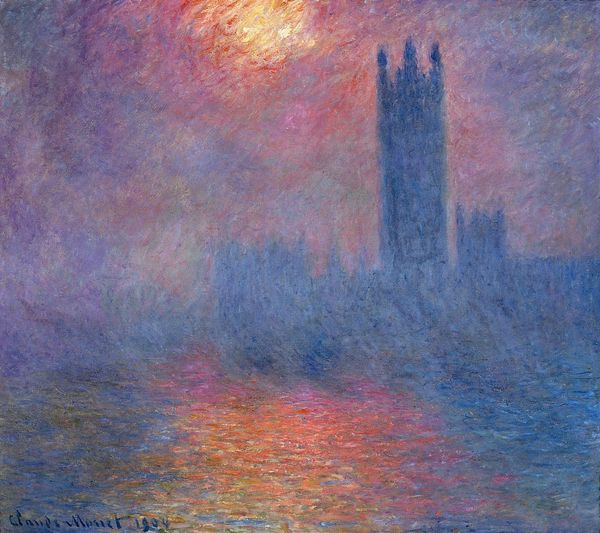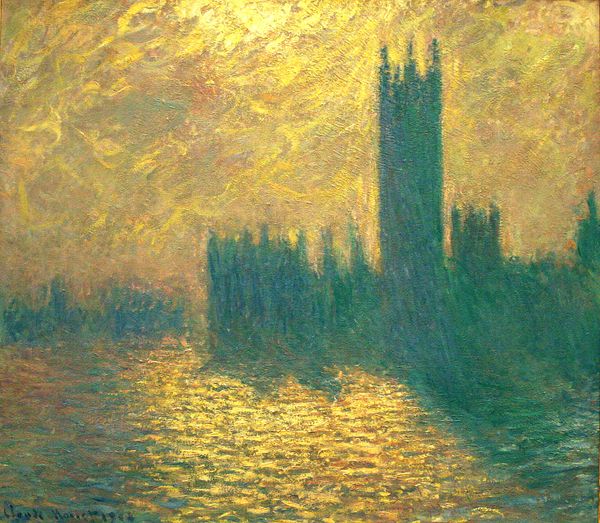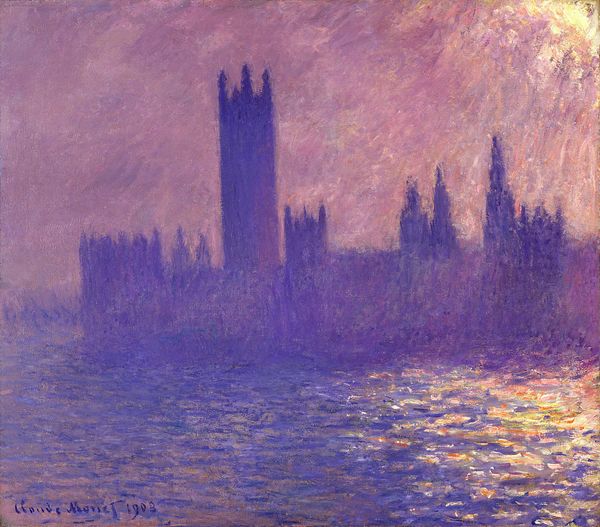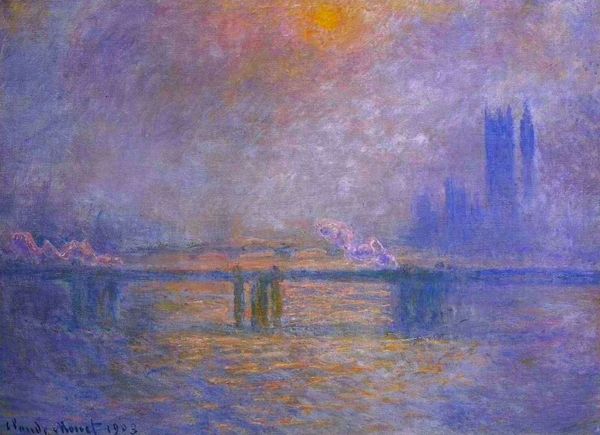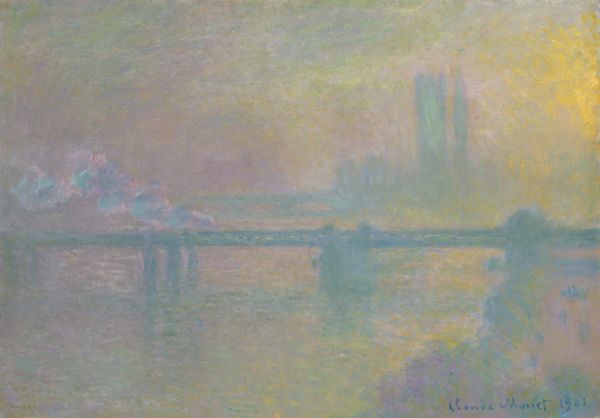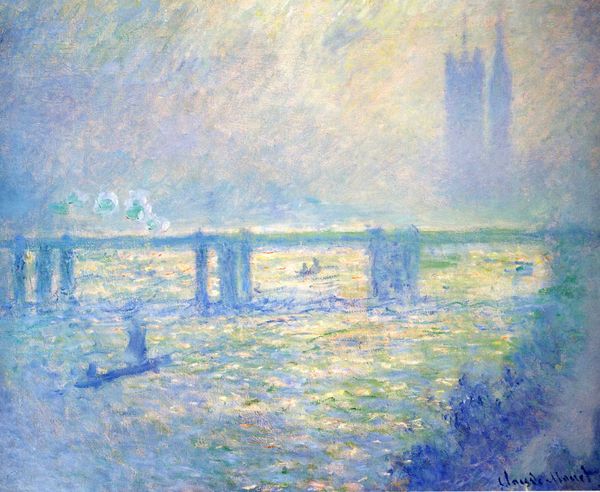
Copyright: Public Domain: Artvee
Curator: There's something undeniably melancholic about this canvas; it’s almost entirely shrouded in blues and purples. What do you see when you look at Monet’s "Houses of Parliament, London," painted around 1900? Editor: I see a symbolic blurring, almost an intentional obfuscation of power. Parliament, normally a stark, imposing symbol of British authority, dissolves into atmospheric haze. It's fascinating how the institution becomes ethereal, questioned even. Curator: Indeed. Monet wasn't necessarily after political commentary; more likely, he chased a specific atmospheric effect on the Thames. He rented rooms overlooking the river specifically to capture these fleeting moments. The constant re-visiting of images mirrors the constant changes in what you can observe, as light and color change. There are many works that show these same views. Editor: That makes sense. Monet seemed determined to portray these buildings dissolving and reforming with light. How do you interpret his obsession with representing architecture that was also a political centre? Curator: For Monet, Parliament might have been secondary to what it represented as a silhouette: enduring, but also ephemeral against the elements. There’s a romantic quality in finding visual permanence within such transience. We're projecting an aura on a specific type of stone and constructed skyline. What associations does it hold, that makes the heart ache, even in it's partially hidden view? Editor: I think there is a conscious visual choice. Parliament is there, just on the verge of dissolving, representing the shifting societal and political currents that modernity introduces. He captures a specific moment in time, just before all certainties went out of the window with the First World War and Modernity hit its stride. Curator: The blurring and blending becomes a powerful visual metaphor, then, for historical change, doesn’t it? It allows viewers to project anxieties onto a shared cultural icon. A sign that is both enduring and changing. Editor: Exactly. Even a seemingly apolitical approach opens up complex readings. Ultimately, it becomes less about the architectural accuracy, and more about using familiar visual vocabulary to reflect the weight of a changing era. Curator: Precisely, and by focusing on atmospheric impressions, Monet captures something much deeper about collective anxieties, maybe even unintentionally, but undoubtedly, perceptively.
Comments
No comments
Be the first to comment and join the conversation on the ultimate creative platform.
